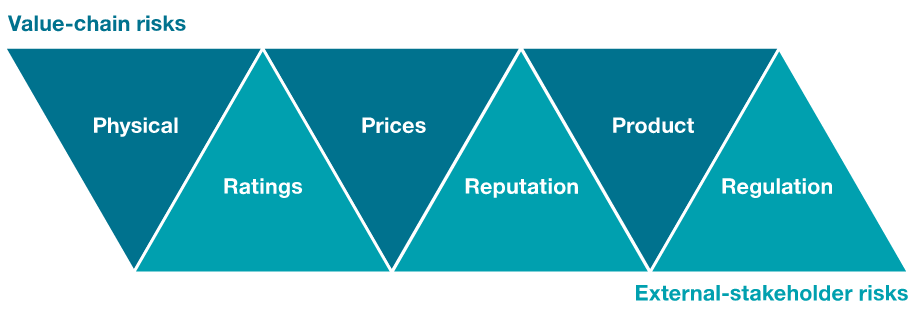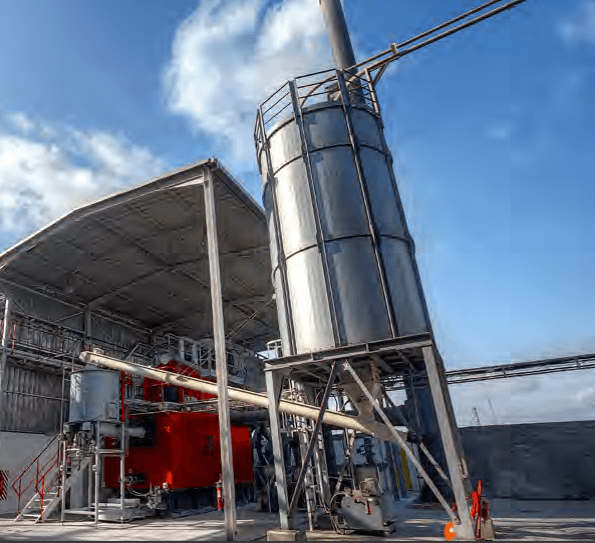Sweet Sustainability Efforts

How do we protect the world’s chocolate supply when climate change knocks at the door?
Barry Callebaut
Barry Callebaut is one of the world’s leading producers of chocolate and cocoa products. They have built a $6BB global business around manufacturing high quality chocolate products by creating value through all stages from raw material production to delivery of finished products. [1] With an increase in global demand for chocolate and climate change posing an imminent threat to their cocoa crop productions, how can a chocolate company possibly address their challenges at hand and play a part in the world’s efforts to mitigate climate change?
Climate Change, Agriculture & Chocolate
Climate change, arguably the central topic of one of the most prevalent global discussions that has taken place throughout the 21st century is increasingly impacting companies around the world. Scientific and academic communities have widely acknowledged that the Earth is warming as a result of human emissions of greenhouse gases. In particular, the effects on agriculture and global crop production have become ever more apparent. Food production is closely correlated with water availability, soil conditions and temperature. [2] As a result, changing weather patterns and increasing global temperatures have resulted in unpredictable crop yields and decreased productivity for many farmers around the world. Currently West African countries provide nearly 70% of global cocoa output. [3] Communities in this region are built upon farming this crop and rely heavily upon their favorable ecosystem to foster growth and high yields from their cocoa plants. Unfortunately, weather patterns of recent years and projections for the future (as show in the figure below) suggest marked risks in the suitability for cultivation of cocoa in these areas moving forward. For Barry Callebaut, climate change is expected to have serious implications on the cocoa crops that fuel their business.
Barry Callebaut Taking Action
Reduced Emissions and Closed Loop Cycle
Over the years Barry Callebaut has not only focused on the immediate challenges that its business faces but also on doing its part in addressing the greater climate change issue at hand. They have dedicated significant resources towards improving their company operations where their overall environmental impact is the greatest – energy consumption. Barry Callebaut has implemented systems in many of their local factories to address their carbon footprint and reduce overall emissions simply by taking advantage of the resource they know best – cocoa. Throughout cocoa processing, shells are removed and typically considered as waste. Barry Callebaut on the other hand, is now burning these shells as biomass in boiler systems to create high pressure steam. Paired with steam turbines and a generator, this steam is harnessed to generate the energy that runs their facilities. [4] Furthermore, the ashes can then be collected and recycled on the farms to promote more fertile soil conditions. Through this creative use of biomass renewable energy and other energy reduction initiatives Barry Callebaut was able to reduce relative energy use and carbon emissions by 20% in 5 years. They have continued this ambitious effort by setting targets of an additional 20% by 2020. [5]
World Cocoa Foundation
Recognizing that climate change and unsustainable farming practices continue to reduce the amount of suitable farming land available for cocoa products, Barry Callebaut has continued to be a fundamental member in the World Cocoa Foundation (WCF). Here they command efforts in promoting sustainability in the cocoa sector and provide support to cocoa farmers and their local communities. Most recently, they have joined a partnership under the WCF specifically dedicated towards addressing the threat climate change poses.[3] Through these initiatives, Barry Callebaut is able to dedicate resources towards adaptive crop strategies and practices in order to maintain a stable product supply in light of the changing climate conditions. This strategic effort by Barry Callebaut and other stakeholders allows them to leverage their collective resources to address the important issues that the industry faces. Among other things, funding promotes research into overall cocoa crop resilience efforts including seed DNA, and soil fertility analysis.[6] The below figure shows a complete overview of the WCF initiatives in developing a rejuvenated and economically viable cocoa sector.
The sweet future of Chocolate?
Barry Callebaut has made substantial efforts targeted toward the long term sustainability of their industry but it is difficult to say whether this will be enough. The uncertainty of the climate changes we may encounter leaves few people 100% confident that the actions we take today will be enough to support the sustainability of our future. Despite Barry Callebaut’s labors to ensure long term cocoa production in West Africa will they inevitably be forced to move production elsewhere?
[767 Words]
Works Cited:
[1] OneSource Company Summary Report for Barry Callebaut AG. Accessed November 2016
[2] Rebecca M. Henderson and Sophus A. Reinert, Polina Dekhtyar and Amram Migdal. “Climate Change in 2016: Implications for Business.” HBS No. N2-317-032 (Harvard Business School Publishing, 2016). pg. 4
[3] 2016. Leading Cocoa and Chocolate Companies Join Together To Help Cocoa Farmers Adapt To Weather And Climate Impacts. PR Newswire US, 31 May 2016.
[4] Barry-Callebaut.com. 2016. Environment. [ONLINE] Available at: https://www.barry-callebaut.com/sustainability/environmental-protection. [Accessed 02 November 2016].
[5] Barry-Callebaut.com. 2015. Chocolate Sustainability Report. [ONLINE] Available at: https://www.barry-callebaut.com/system/files/download/barry_callebaut_chocolate_sustainability_report_2014-15.pdf. [Accessed 2 November 2016].
[6] WorldCocoaFoundation.org. 2015. WCF November & December 2015 – “From Bean to Bar and to Genetics to Flavor”. [ONLINE] Available at: http://www.worldcocoafoundation.org/wcf-november-december-2015/. [Accessed 2 November 2016].
Images:
Michon Scott. 2016. National Oceanic and Atmospheric Administration . [ONLINE] Available at: https://www.climate.gov/print/809336. [Accessed 2 November 2016].
World Cocoa Foundation. 2016. Cocoa Action Annual Report 2015. [ONLINE] Available at: http://www.worldcocoafoundation.org/wp-content/uploads/CocoaAction-Annual-Report-2015-English.pdf. [Accessed 2 November 2016].






Great subject, I couldn’t skip this article as a great chocolate fan! But more important, I personally find this article interesting because Africa is the most vulnerable region to climate changes and will suffer the most- projections of crop yield indicate a reduction of up to 50% during the next decades.
I loved the fact Barry Callebaut use of renewable energy and use their cocoa waste to create energy and the ashes to create soil – 20% increase in carbon release is very meaningful. However, I wonder if they further increase their impact, and I wondered about the following ways:
First, they are a leader but there just a share of the cocoa industry. In order to make an impact they should spread their practices among the industry. I wonder if they are doing it today, and if not – why?
Second, as mentioned before, Africa is the first to suffer. Beyond the waste in the factories themselves and the cocoa protection plans (in WCF) , Callebaut (and other organizations importing goods from Africa) should have a major interest to “fight” for protection of the African farmers and crops as a whole, otherwise Callebaut might end up with no cocoa at all.
It’s great to see Barry Callebaut being an active member of the World Cocoa Foundation. There is scope for collaboration across businesses in many industry sectors with regard to slowing and reversing climate change. This can be developed and used as a model for many other industries. It would be interesting to see what, if any, plans the company has for using seed engineering / microbiome technology as a way to mitigate declining agricultural output.
Did not see this post when I started replying, but awesome that we highlighted a similar takeaway!
Interesting that Barry Callebaut is working with the WCF on strategies to help the industry adapt. Is this a model for other industries that are struggling with similar challenges? What is the nature of this partnership? Are they contributing money towards research? Are they just sharing best practices? It sounds like involvement with this organization is a major part of their strategy so I’m just curious how such an industry-specific venture can be replicated by other companies to drive larger-scale impact as companies work to address climate change.